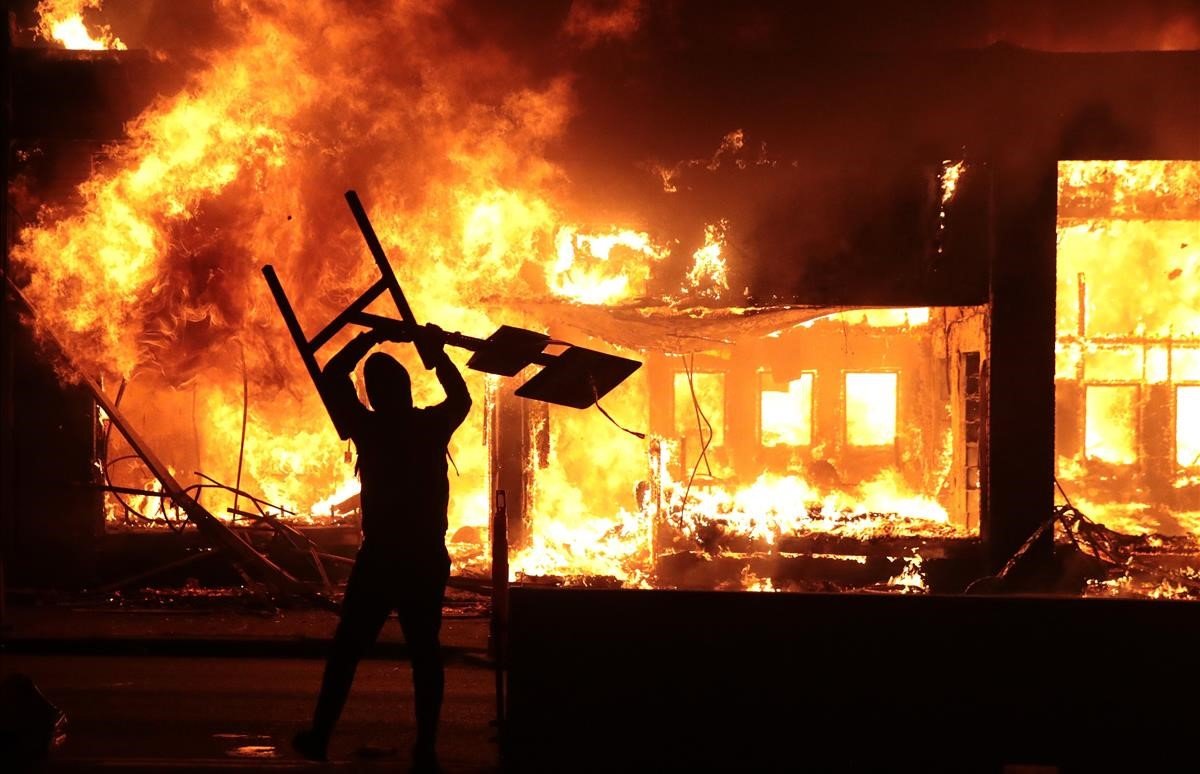
What Is Burning Is the United States
“American life, you said, is not possible.” Thus begins a poem by Carolyn Forche with a verse (from the book “The Country Between Us”) that could well be taken out of context for these uncharted times. If there is a figure of speech that politicians overuse, “synecdoche” (defined as a part meant to represent the whole) takes the cake. Perhaps because we disregard Planian materialism (from Spanish author Josep Pla, who eschewed every form of psychologism and emotional effusion, and thus avoided the mistake of embarking on writing novels). And perhaps, it requires a teaspoon of irony to digest an overdose of reality that is amplified by the optical illusion of social media and news services that never shut down. Is American society as sickeningly polarized as it appears to be? Everything intensifies during an election, prompted by the need of both parties to ideologically steel their own people and make those who are lukewarm hesitate.
One of the most unique movies of 2019 was “Fire Will Come,” set in the Ancares region, in the virtually uninhabited countryside of Galicia. The film’s writer and director, Oliver Laxe, presented a story about destructive fires that were constantly and deliberately set, and perhaps a story about what leads arsonists to their nihilistic act.
If we refocus that lens across the Atlantic, we may see images of fires burning in the American night — providing an X-ray of a country mired in bewilderment and bad blood; all abetted by a dexterous arsonist known as Donald Trump. Given that the economy is still depressed and the COVID-19 pandemic rages on (it is estimated that by the Nov. 3 election there will be 200,000 fewer citizens who will see the results), Trump has appeared to rely increasingly on unrest as an asset for reelection.
The White House as a Springboard
After transforming the White House into a partisan springboard and a staging area for something that resembled an imperial “Mussolinian” display, Trump accepted the Republican presidential nomination with a “law and order” message and the support of his family. At the same time, the streets roared once more (a synecdoche plus a metaphor) following the death of Jacob Blake, an African American man, on Aug. 23 in Kenosha, Wisconsin; shot seven times al in the back at almost point blank range, by a white police officer. What adds a chill to the terror is that, despite the fact that Blake’s injuries from the gunshots rendered him unable to walk, he was still shackled to his hospital bed. This episode closely resembles the protests triggered by the death of George Floyd (who succumbed to choking after nearly nine minutes under the knee of another white police officer) last May in Minneapolis.
Despite the evidence of police brutality, Trump has shown no compassion for those victims (and the same goes for the victims of the pandemic). And he has supporters who even take the law into their own hands, such as 17-year-old Kyle Rittenhouse, who killed two protesters in Kenosha.
Moreover, in Portland, Oregon, clashes between advocates of the “Trumpian” hard-liners and the Black Lives Matter movement continued, leading to the shooting death of one of the president’s supporters on Saturday.
Journalist Thomas Edsall published a well-researched piece in The New York Times with a chilling conclusion: “I fear that we are witnessing the end of American democracy.” If newspapers are the first draft of history, are we reading an accurate version of what is happening to us?
